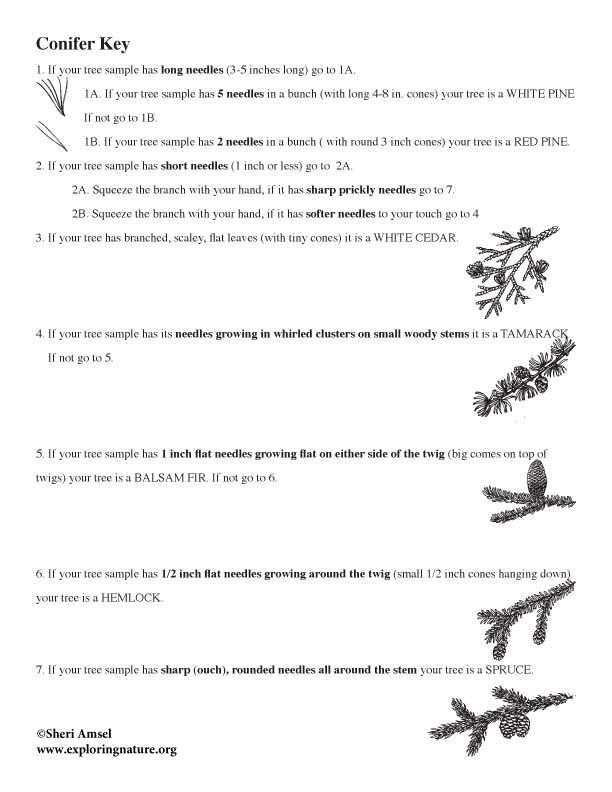

Conifers have leaves that are green needles. Most keep their green needles all year long, except tamaracks/larch. Conifers have cones. Female cones carry the seeds. Male cones release pollen. At certain times each year, pollen is released and sent by the wind to find the seeds. The seed cones are pollinated producing fertile seeds. When the cones are dropped or harvested by animals, seeds dropped into the soil produce new conifers.
Activity - Identifing Trees:
We have supplied a 1-page Dichotomous Key below to help you identify the conifer trees in your schoolyard.
Dichotomous keys are easy to use after some practice. Bring your printed key out into the schoolyard and choose a tree to identify. Note that each step of the key usually has two choices. After identifying the trait, move onto the next step until you reach the name of your tree.
If you reach a step with vocabulary you do not know, take a moment to look up the word before moving on. Once you are comfortable identifying trees, make a map of all the trees in your schoolyard.
Download and print out the pdf below for Tree ID.
3. Life Science Standards
Science subject matter focuses on the science facts, concepts, principles, theories, and models that are important for all students to know, understand, and use.
K-4 Characteristics of Organisms, life cycles of organisms, organisms and environments
5-8 Structure and function in living systems, reproduction and heredity, regulation and behavior, populations and ecosystems, diversity and adaptations of organisms
When you research information you must cite the reference. Citing for websites is different from citing from books, magazines and periodicals. The style of citing shown here is from the MLA Style Citations (Modern Language Association).
When citing a WEBSITE the general format is as follows.
Author Last Name, First Name(s). "Title: Subtitle of Part of Web Page, if appropriate." Title: Subtitle: Section of Page if appropriate. Sponsoring/Publishing Agency, If Given. Additional significant descriptive information. Date of Electronic Publication or other Date, such as Last Updated. Day Month Year of access < URL >.
Amsel, Sheri. "Coniferous Tree Identification - Using a Dichotomous Key" Exploring Nature Educational Resource ©2005-2024. December 13, 2024
< http://www.exploringnature.org/db/view/1257 >
